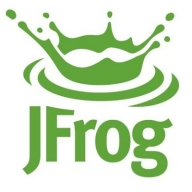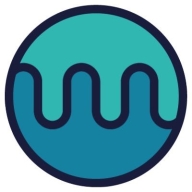

Mend.io and JFrog Xray are strong contenders in software composition analysis, each with notable advantages. Mend.io is recognized for its affordability and efficient integration, while JFrog Xray shines with its comprehensive features and extensive coverage.
Features: Mend.io provides rapid security integration, vulnerability identification, and streamlined workflows. JFrog Xray offers detailed artifact scanning, extensive security insights, and compliance management capabilities.
Room for Improvement: Mend.io could enhance its feature depth and offer more extensive compliance reports. Improving integration capabilities and expanding language support would also be beneficial. JFrog Xray may benefit from simplified setup processes and streamlined user navigation. Additionally, it could improve the initial learning curve and optimize its pricing strategy for broader accessibility.
Ease of Deployment and Customer Service: Mend.io features easy deployment with strong customer support, ensuring quick resolution of issues. JFrog Xray, while offering extensive post-deployment support, demands a more intricate setup process, which can extend deployment timeframes but ensures thorough support thereafter.
Pricing and ROI: Mend.io's competitive pricing model provides a fast return on investment by minimizing setup costs. JFrog Xray requires a higher initial investment but its extensive features offer potential long-term value, justified by its extensive capabilities and benefits over time.


JFrog is on a mission to enable continuous updates through Liquid Software, empowering developers to code high-quality applications that securely flow to end-users with zero downtime. The world’s top brands such as Amazon, Facebook, Google, Netflix, Uber, VMware, and Spotify are among the 4500 companies that already depend on JFrog to manage binaries for their mission-critical applications. JFrog is a privately-held, global company, and is a proud sponsor of the Cloud Native Computing Foundation [CNCF].
If you are a team player and you care and you play to WIN, we have just the job you're looking for.
As we say at JFrog: "Once You Leap Forward You Won't Go Back!"
Mend.io is a software composition analysis tool that secures what developers create. The solution provides an automated reduction of the software attack surface, reduces developer burdens, and accelerates app delivery. Mend.io provides open-source analysis with its in-house and other multiple sources of software vulnerabilities. In addition, the solution offers license and policy violation alerts, has great pipeline integration, and, since it is a SaaS (software as a service), it doesn’t require you to physically maintain servers or data centers for any implementation. Not only does Mend.io reduce enterprise application security risk, it also helps developers meet deadlines faster.
Mend.io Features
Mend.io has many valuable key features. Some of the most useful ones include:
Mend.io Benefits
There are many benefits to implementing Mend.io. Some of the biggest advantages the solution offers include:
Reviews from Real Users
Below are some reviews and helpful feedback written by PeerSpot users currently using the Mend.io solution.
Jeffrey H., System Manager of Cloud Engineering at Common Spirit, says, “Finding vulnerabilities is pretty easy. Mend.io (formerly WhiteSource) does a great job of that and we had quite a few when we first put this in place. Mend.io does a very good job of finding the open-source, checking the versions, and making sure they're secure. They notify us of critical high, medium, and low impacts, and if anything is wrong. We find the product very easy to use and we use it as a core part of our strategy for scanning product code moving toward release.”
PeerSpot reviewer Ben D., Head of Software Engineering at a legal firm, mentions, “The way WhiteSource scans the code is great. It’s easy to identify and remediate open source vulnerabilities using this solution. WhiteSource helped reduce our mean time to resolution since we adopted the product. In terms of integration, it's pretty easy.”
An IT Service Manager at a wholesaler/distributor comments, “Mend.io provides threat detection and an excellent UI in a highly stable solution, with outstanding technical support.”
Another reviewer, Kevin D., Intramural OfficialIntramural at Northeastern University, states, "The vulnerability analysis is the best aspect of the solution."
We monitor all Software Composition Analysis (SCA) reviews to prevent fraudulent reviews and keep review quality high. We do not post reviews by company employees or direct competitors. We validate each review for authenticity via cross-reference with LinkedIn, and personal follow-up with the reviewer when necessary.